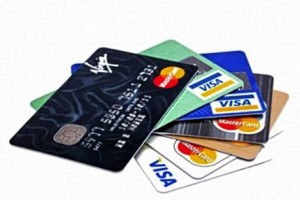Using debit cards when traveling overseas is not always the best option. In fact, I would go so far as to say using debit cards when traveling overseas is never the best option. While ATM’s are usually within hailing distance no matter where you are, there are plenty of factors you should take into account before using them to get cash, and you should definitely be wary about using them for purchases.

While shooting on location this spring in Australia and New Zealand, we seriously considered not taking any debit cards at all. In what is becoming more and more of a cashless society, this might seem like a foolish idea, but the costs involved seemed to outweigh the benefits. We ended up taking one debit card as a backup, but we never used it. We used a lot of cash, and using a credit card was a far more useful and economical option.
However, if using a debit card when traveling overseas is your only option, you should keep several tips in mind.
Drowning in seas of fees
In my opinion, there are more costly and unavoidable fees associated with using a debit card when traveling overseas than with any other transaction. You are likely to be hit with any or all of the following fees:
Out of network fees (starting at $2-5 USD
- Local ATM usage fees (starting at $1-3 USD
- Transaction fees from your own bank (starting at $1-3 USD
- Foreign Transaction fees (starting at 1-3% of the amount being withdrawn or purchased
- Currency conversion fees (starting at 1-3% of the amount being withdrawn)
And that’s before the vendor gets involved. Here are three words that should raise alarm bells every time you encounter them – dynamic currency conversion. While not technically a fee, it’s hardly to your advantage when merchants use them, ostensibly as a convenience for you. Rick Steves has a great explanation here.
Contact your bank before you leave
If those mostly unavoidable fees and surcharges don’t scare you off, contacting your bank before you leave is the most important step you should take if you are using debit cards when traveling overseas. Even though I knew I was not likely to be using debit cards when traveling overseas, I did warn my bank I was going to be thousands of miles from home. This change to your spending profile greatly decreases the risk of your card being eaten by a foreign ATM. The bank considers it a safety precaution, but you will be in far less of an understanding mood if it happens to you on the road.
Know the network
You should also confirm with your bank which ATM systems are considered “in network.” Generally, an ATM with the Visa or MasterCard logo should be fine, but you should be aware of the potential for out of network ATM’s. I already mentioned the fees, but you should also be aware that some independent ATM chains place their machines as close to banks as possible, in order to make it look like they are part of that system. If you have any doubts, go inside and ask a teller if the ATM outside is part of their network.
Safety first, second, and third
While we’re on the subject, you should make every effort to obtain money via an ATM during banking hours. If your card is eaten, you can start working on a solution immediately. It’s hard to stress this enough. If you must use an ATM, find one outside of a bank that is open. I understand that this is not always possible. When we were shooting in the outback of Australia near Uluru and overnighting at Yulara, there were no banks, let alone banks that were open. Our only option was an independent ATM in the shopping complex. Even though this was likely a low crime area, we made sure to use a machine that was within sight of an open vendor, and we made our transaction when there was low foot traffic around us, so that we could monitor our surroundings. As an aside, we were using a credit card for a cash advance, not a debit card,which I’ll write about in the next post. Look for security cameras. And even then, do your best to shield the movements of your hands as you key in your PIN. Avoid those prying eyes of identity theft experts who surreptitiously catch your PIN as you key it into the system. When their partners in crime pick your pocket… or even worse, rob you blocks away, they have everything they need. Also, don’t forget the earlier tip about keeping your credit and debit cards in RFID signal blocking sleeves. It only takes a quick brush against your wallet or purse by an identity theft expert with an RFID reader to steal your card information without ever touching or stealing the card itself.
Know your limits
Your bank will probably limit you to a daily total when it comes to how much cash you can withdraw. In counties with a strong currency relative to the dollar, this can result in a much lower amount of spending money than you would like. Your $300 daily limit might not go very far in countries where the dollar is relatively weak. Know the exchange rate and plan accordingly.
Really, the convenience of using debit cards when traveling internationally is, in my opinion, far outweighed by the costs. A credit card is actually a better option in many cases. I’ll cover that in the next Monday post.

One thought on “Dealing with Debit Cards When Traveling Overseas”